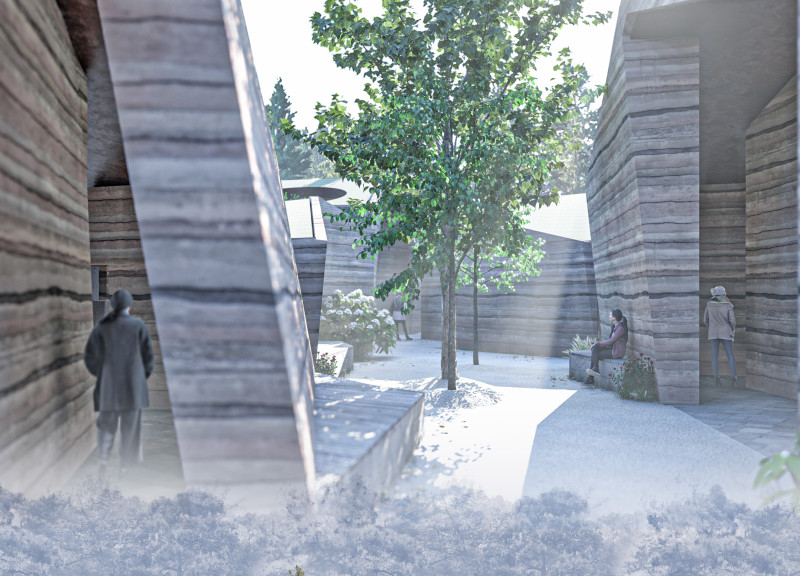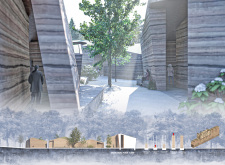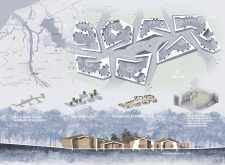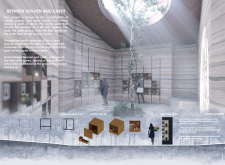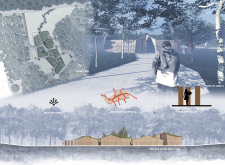5 key facts about this project
At its core, the design represents the theme of "Between Heaven and Earth," reflecting the intricate relationship between life and the afterlife. This concept is not only woven throughout the physical structure but also manifests in the spatial arrangements and material choices, all aimed at providing an atmosphere conducive to introspection and connection with nature. The emphasis on memory and continuity underscores the larger narrative that this space seeks to express.
Functionally, the project is designed to accommodate diverse activities related to remembrance. With thoughtfully arranged niches for ashes, the design facilitates individual moments of reflection while also fostering a sense of community among visitors. The integration of closed and open spaces enhances the user experience, allowing for a fluid progression between private contemplation and shared experiences. The pathways connecting these spaces guide visitors naturally, creating an intuitive flow that invites exploration and engagement with the landscape.
A significant aspect of the architectural design is its careful choice of materials, which play a crucial role in establishing the project's character and aesthetic. Rammed earth, known for its sustainability and thermal mass, forms the primary structure, connecting the building to its local context. Corten steel, utilized for the niches, adds an element of durability while evolving aesthetically over time as it develops a patina, symbolically linking the transient nature of life with permanence. The use of locally sourced wood not only reinforces the connection to the environment but also introduces warmth and texture into the design. Gravel paths, described in poetic terms as the "melody of footsteps," provide both a tactile experience and an auditory dimension to the landscape.
Natural light serves as a key design element, with zenith openings incorporated into closed spaces to invite soft illumination. This aspect of the design offers a visual metaphor for enlightenment and transcendence, enhancing the overall atmospheric quality of the interiors. The careful consideration of light contributes significantly to the sensory experience, guiding emotions and thoughts as visitors navigate the space.
Moreover, the project pays attention to the surrounding landscape, leveraging trees and greenery as integral components of both the aesthetic and functional aspects of design. This landscaping not only frames the architecture but also reinforces the therapeutic quality of the environment, promoting a sense of peace and tranquility.
The uniqueness of this architectural project lies in its multifaceted approach to memorialization. The interactive niches for ashes encourage meaningful engagement, while the pathways and landscaping invite communal interaction. This thoughtful integration of spatial design, symbolism, and materiality results in an environment that resonates on both personal and universal levels.
By exploring further elements such as architectural plans, architectural sections, and architectural designs associated with this project, readers can gain a deeper understanding of the innovative ideas and intentions that drive this design forward. The nuances of the project offer a rich narrative that is well worth delving into, alongside the thoughtful integration of nature and architecture that creates a lasting impression.


